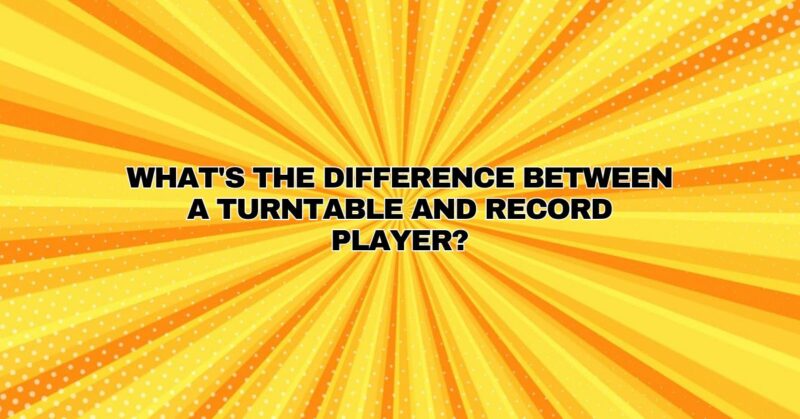In the world of analog audio, the terms “turntable” and “record player” are often used interchangeably, leading to some confusion. However, these two terms refer to distinct components within a vinyl playback system, each with its own set of features and functions. In this comprehensive article, we will explore the differences between a turntable and a record player, shedding light on their unique roles in the world of vinyl playback.
Turntable: The Heart of Vinyl Playback
A turntable is the core component of a vinyl playback system. It is designed primarily for the purpose of rotating the vinyl record and providing a stable platform for the stylus (needle) to track the grooves and reproduce sound. Here are the key features and functions of a turntable:
1. Basic Functionality: The primary function of a turntable is to spin the vinyl record at the correct speed (e.g., 33 1/3 or 45 RPM) with precision and consistency. It accomplishes this through various mechanisms, such as belt drive, direct drive, or idler wheel drive.
2. Minimal Electronics: Turntables typically have minimal electronics built into them. They may include features like speed control, pitch adjustment, and tonearm height adjustment. However, turntables do not have built-in speakers or amplification systems.
3. External Components: To produce sound, a turntable requires external components, such as a phono preamp (to boost the cartridge’s weak signal), an amplifier (to amplify the signal further), and speakers (to convert the electrical signal into audible sound).
4. Customization: Turntables often allow for customization, including the choice of cartridge, tonearm, and platter upgrades. This flexibility appeals to audiophiles and enthusiasts who want to fine-tune their audio setup.
5. Audiophile Focus: High-quality turntables are favored by audiophiles for their precision, build quality, and ability to extract the finest nuances from vinyl records. They are a fundamental component in high-end audio systems.
Record Player: An All-in-One Solution
A record player, on the other hand, is a complete, self-contained audio system that includes a turntable as one of its components. It is designed to provide a convenient and integrated solution for playing vinyl records without the need for external components. Here are the key features and functions of a record player:
1. All-in-One Design: A record player combines the turntable, tonearm, cartridge, amplification, and built-in speakers into a single unit. This design makes it a standalone system, requiring no additional components to produce sound.
2. Simplified Setup: Record players are user-friendly and easy to set up. They typically come with a built-in phono preamp, eliminating the need for an external one. Users only need to plug in the power cord and connect the player to a power source.
3. Portability: Many record players are designed with portability in mind. They often feature a compact, suitcase-style design with a handle, making them convenient for on-the-go listening.
4. Entry-Level Appeal: Record players cater to a broader audience, including beginners and casual listeners, by offering a hassle-free and budget-friendly solution for enjoying vinyl records.
5. Sound Quality: While record players offer convenience, they may not deliver the same level of audio fidelity as high-end turntables and separate audio components. Sound quality can vary depending on the manufacturer and model.
Conclusion
In summary, the key difference between a turntable and a record player lies in their functionality and components. A turntable is the core component responsible for spinning the vinyl record, while a record player is an all-in-one system that includes the turntable, amplification, speakers, and often a built-in preamp. Choosing between the two depends on your preferences, budget, and whether you seek a customizable audiophile setup or a convenient, integrated vinyl playback solution. Both options offer a unique way to enjoy the warm and analog sound of vinyl records, catering to a diverse range of music enthusiasts.


